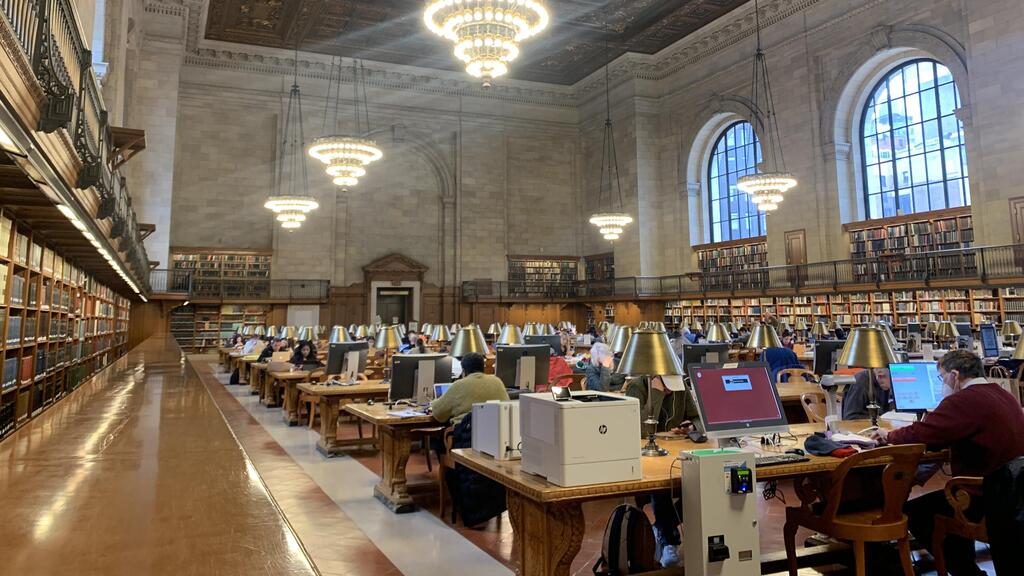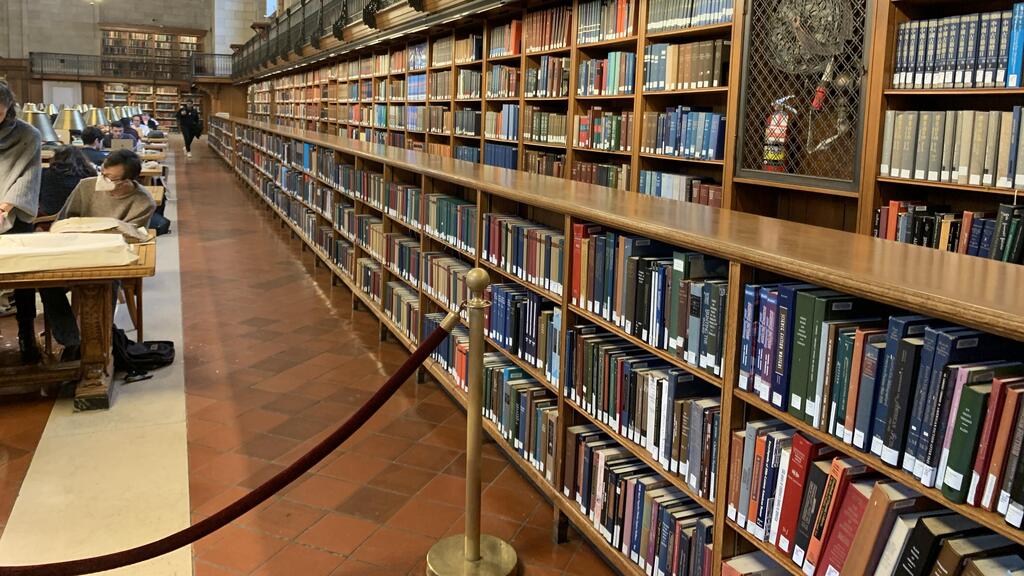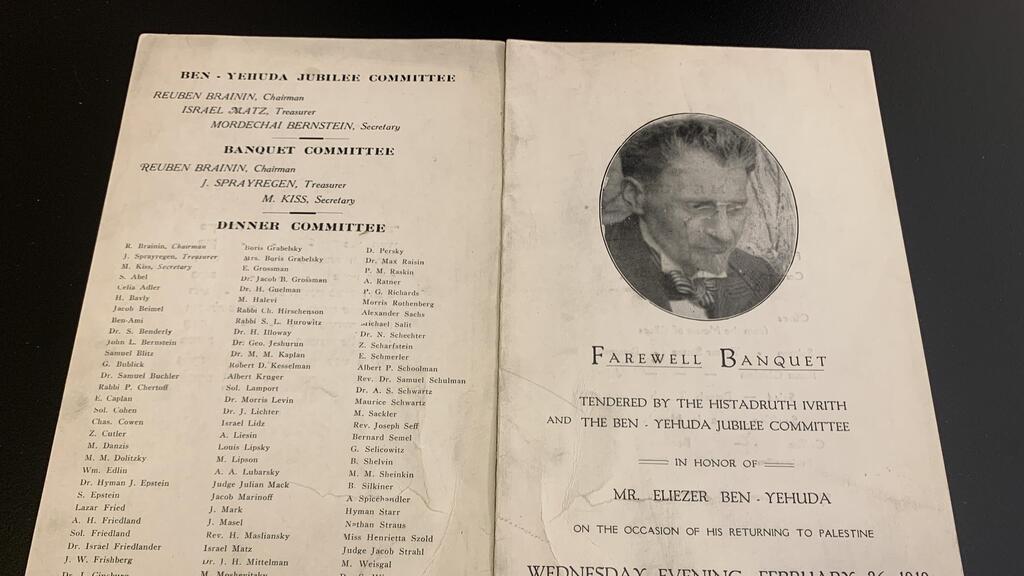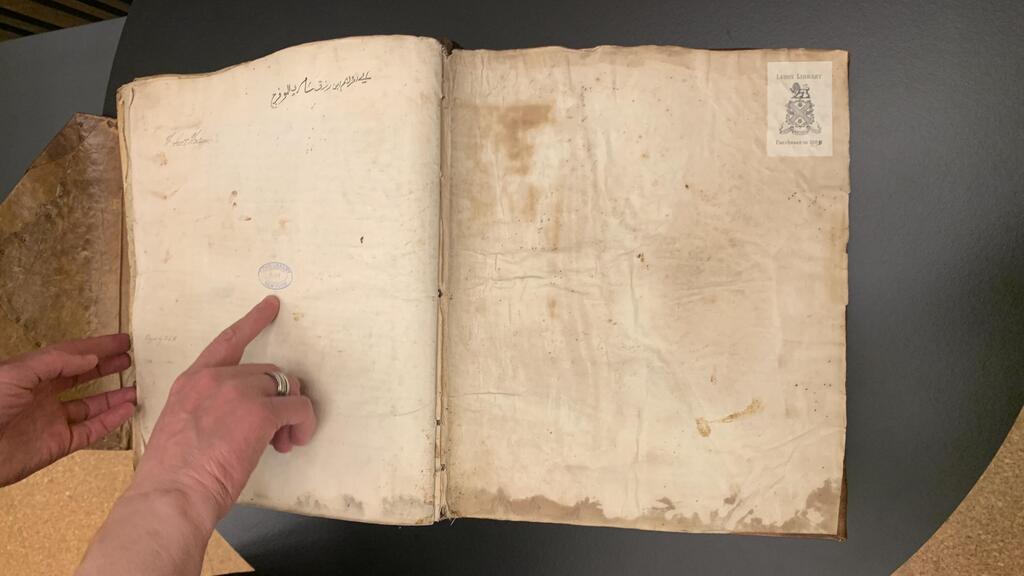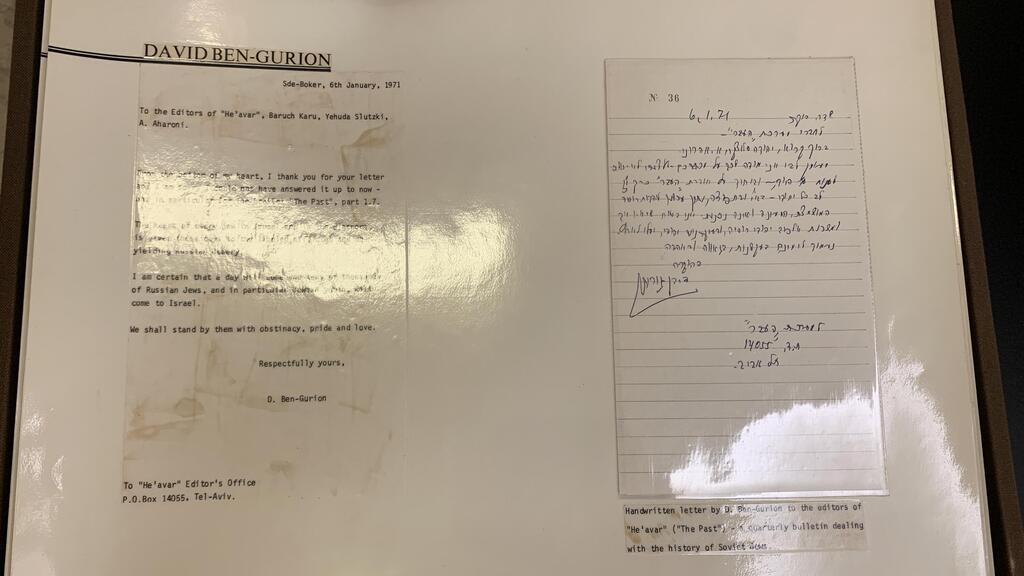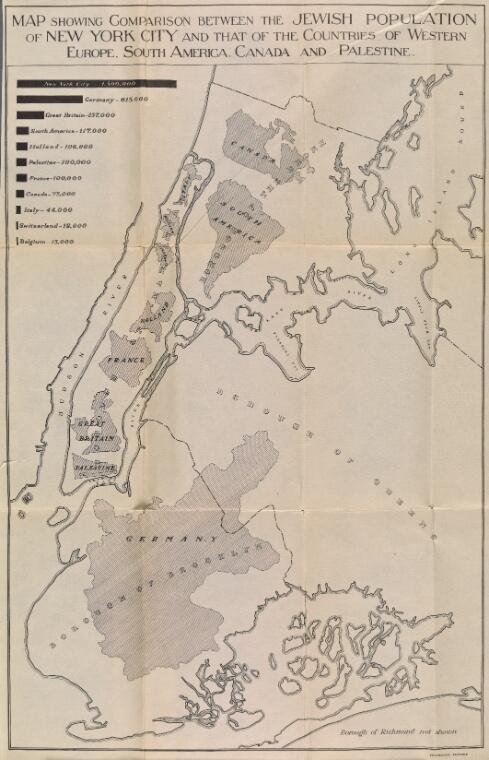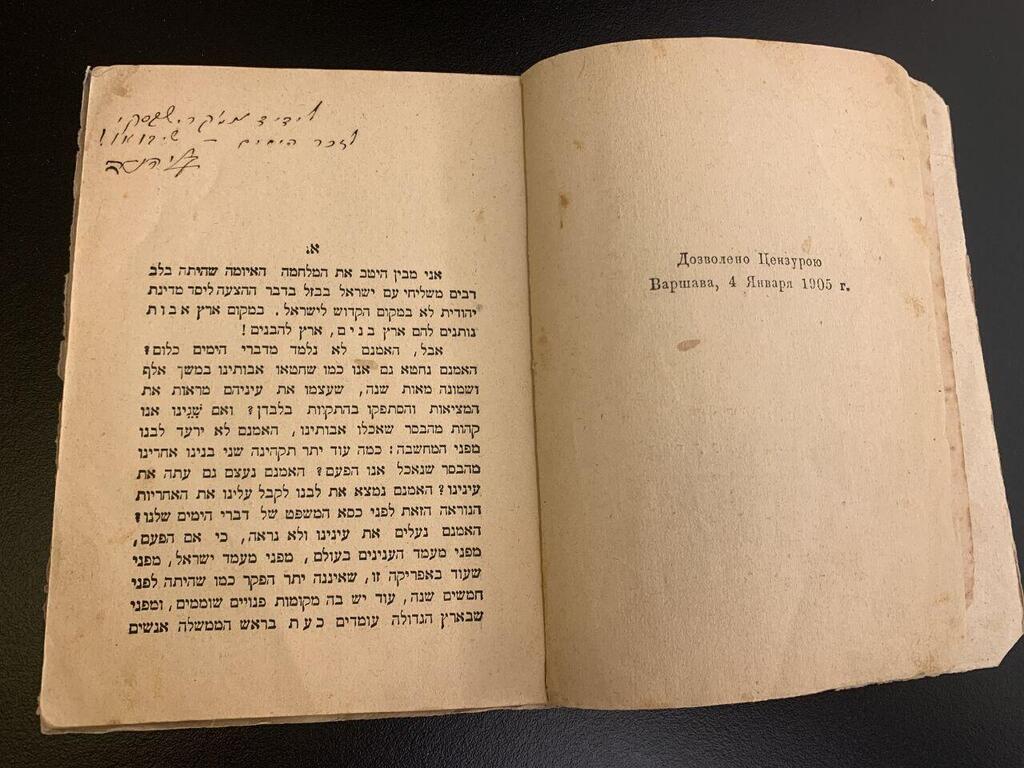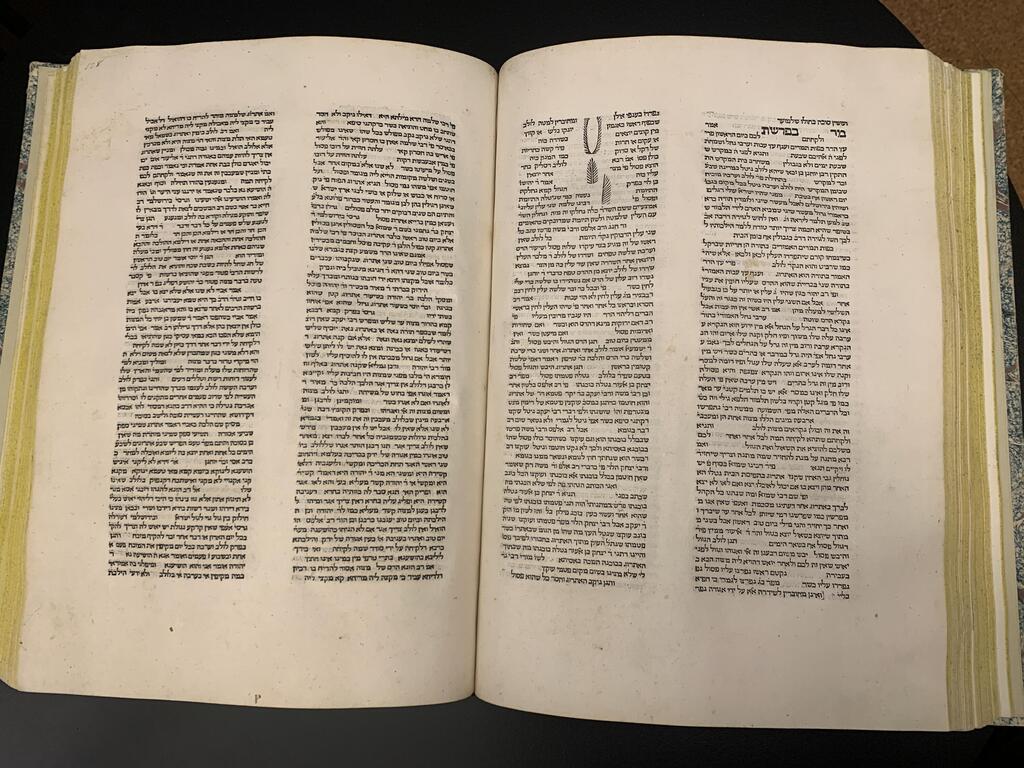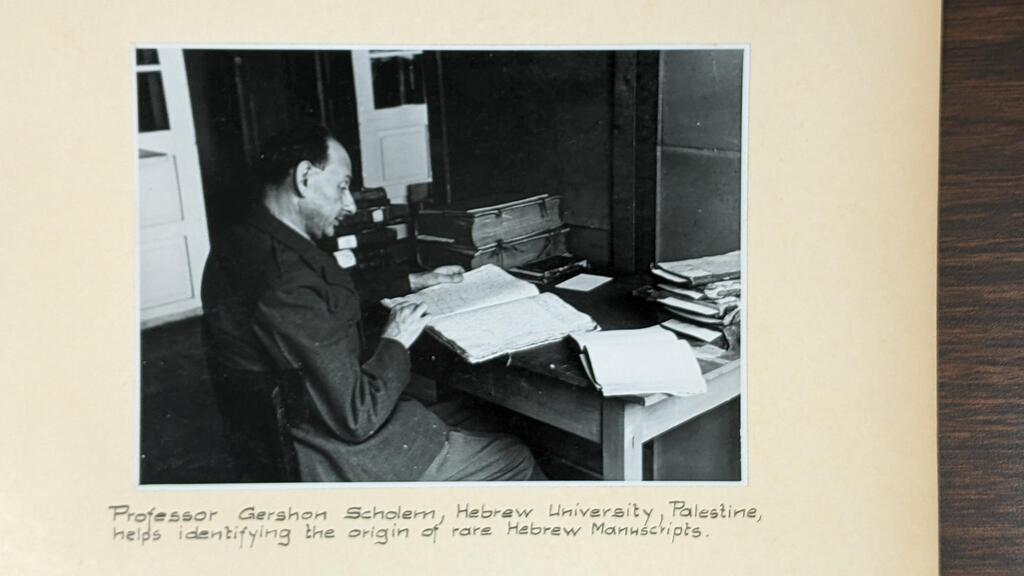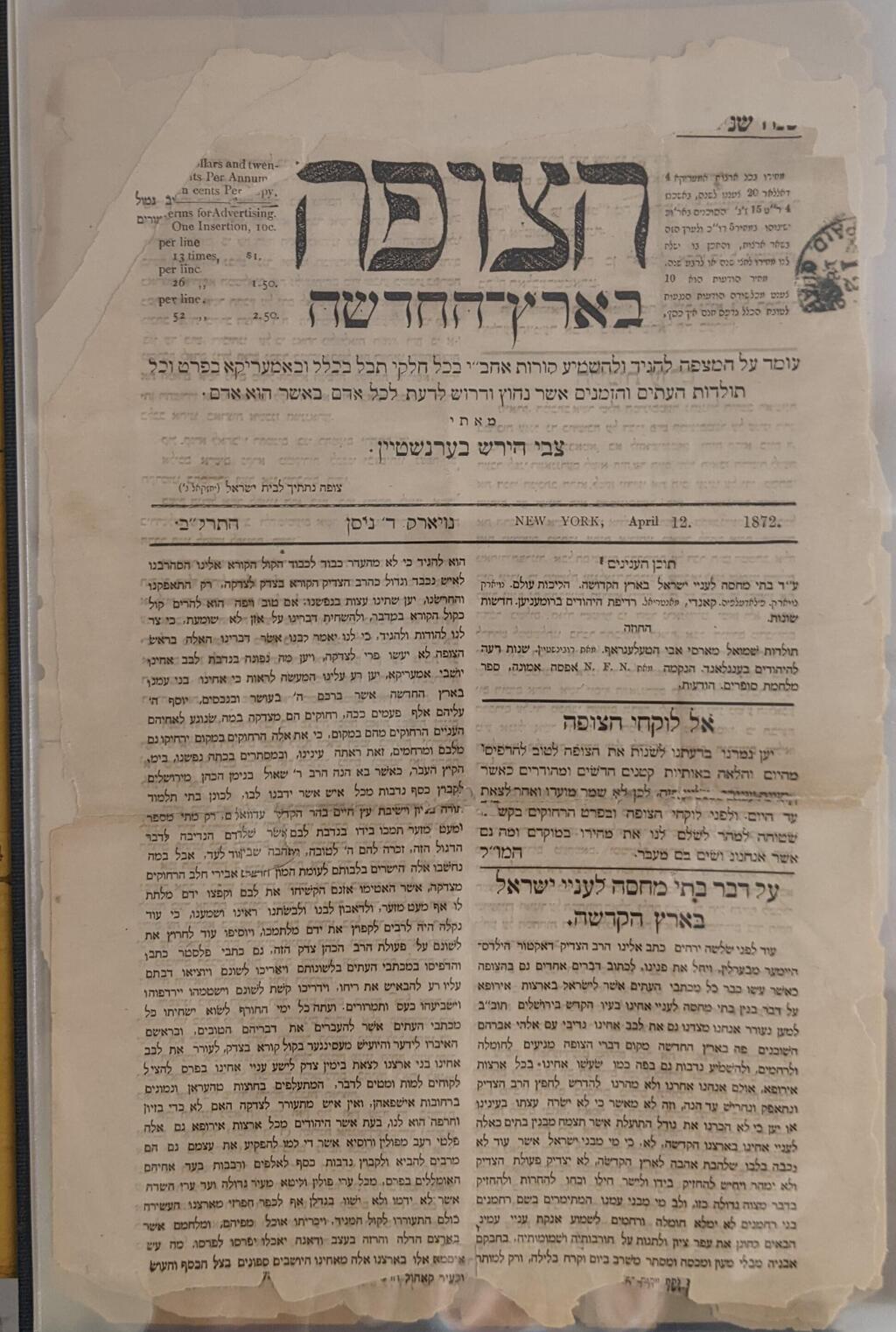Getting your Trinity Audio player ready...
It is difficult to impossible to find refuge in the busy urban jungle that is New York. That's why it's so surprising that precisely in the heart of Manhattan there is a hidden magical kingdom that allows you to go back in time and feel for a few moments like the Jewish version of a Disney princess wandering among antique bookshelves and terrifying chandeliers.
More stories:
Among the millions of books housed in the New York Public Library on Fifth Avenue, there is an entire division dedicated to Jewish literature: the Dorot (Generations) Jewish Division boasts over 250,000 Jewish writings from all over the world, with the earliest dating back to the 13th century. On the 125th anniversary of the foundation of the division, we got a rare glimpse of some gems from the collection.
But before that, it's hard to ignore the setting: the library's main structure is as beautiful on the inside as it is on the outside. This is why it has starred in so many series and movies such as "Breakfast at Tiffany's," "Ted," "Spider-Man," "The Day After Tomorrow" and "Sex and the City". The original architects of the building, John Marvin Carrère and Thomas Hastings, specially designed the tables, chairs, chandeliers, wood carvings – even the trash cans. All of them have been immaculately kept and are used by those who come here to this day.
The exterior of the building is constructed of Vermont marble of such fine quality that over 65% of the specially cut stone simply did not meet the architects' standard. The rejected stone ended up in other iconic buildings such as the Harvard Medical School. The famous pink marble lion statues at the entrance, by the way, the work of the renowned sculptor Edward Clark Potter, have been called many different names over the years – but the ones that have caught on the most are " Patience and Fortitude. "
In its early days, the building was lit and heated by coal, creating more than 20 tons of ash that had to be hauled out daily. The winter of 1929 was the busiest period in the library's history: Every day between 800 and a thousand people crowded the main reading room. The busiest day was December 30 of that year, when about 8,939 books were borrowed in less than 24 hours.
In November 1897, two years after the opening of the library, its Jewish wing was also inaugurated, after banker and philanthropist Jacob Schiff donated $10,000 for the purchase of "Semitic literature" and the hiring of a full-time curator to take care of the collection.
'The best job in the world'
Today, curator Dr. Lyudmila Sholokhova continues this work, and declares that "I probably have the best job in the world. Every time I arrive at the library in the morning and enter the office where Eliezer Ben-Yehuda once sat, I feel so lucky. It is a great honor to be a part of this history," she says in a mixture of Hebrew, Yiddish and English.
The Ukrainian Sholokhova took up the position in 2020, after 16 years of work as a librarian at the YIVO Institute for Jewish Research. "I have Jewish roots, I grew up in a very Jewish atmosphere and I have always been interested in tradition. This work allows me to combine these two loves," she says, pointing to a Hebrew translation of a Mozart opera from 1792.
Over the years, the division's research center has become a pilgrimage center for Jewish researchers from all over the world, and from every field of study - ranging from the study of the relationship between Jews and chocolate, to the history of Jewish women in theater. The same Ben-Yehuda, for example – for who this year marks the centenary of his death – completed his work on the first Hebrew dictionary here. He fled Ottoman rule in the Land of Israel because he feared that his life's work would go down the drain, and found a safe haven in the library. He was considered a legend even in his lifetime, and it was not for nothing that they held a gala ball in his honor here.
Here are some of the rarest items that can be found in the Dorot (Generations) Jewish Division:
1. The invitation to the farewell party for Ben-Yehuda, who was one of the most famous research fellows in the history of the library. During World War I, he came here to continue his work on the first dictionary of the modern Hebrew language, which he eventually brought to the Land of Israel. Legend says that Ben-Yehuda refused to leave the country, but his wife vetoed it. Ben-Yehuda was already very well-known and the Jewish community in the city celebrated his arrival and also rallied to provide for all his needs. The couple lived in an area near Columbia University and Ben-Yehuda could devote himself entirely to the mission.
The archive preserved the invitation to his farewell dinner on February 26, 1919, which includes all the names of the members of the library board as well as the menu in English and modern Hebrew.
15 View gallery
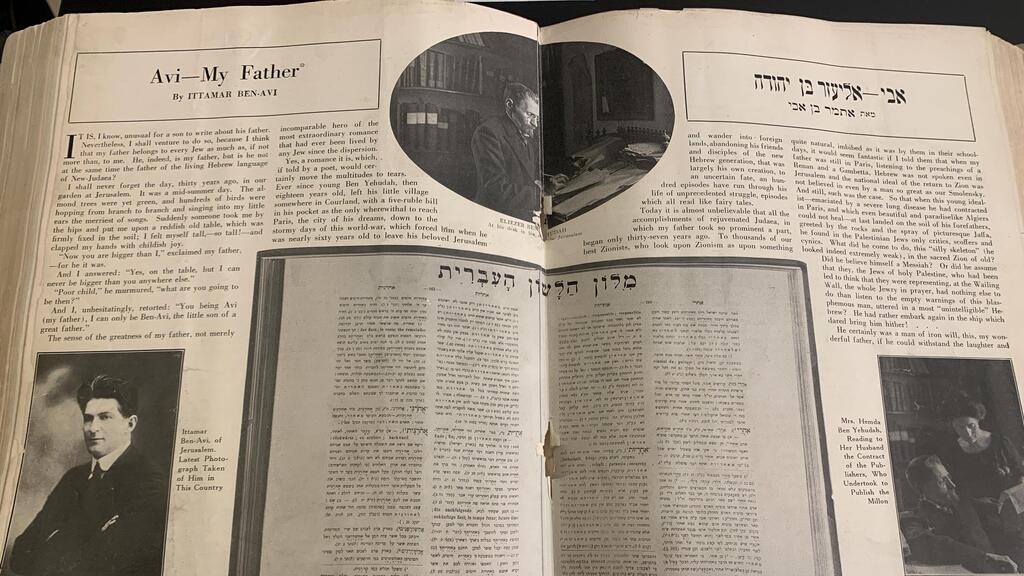

In 1918, the Zionist-American magazine 'Maccabim' devoted an entire issue to Eliezer Ben-Yehuda
2. In 1918, the Zionist-American magazine "Maccabim" devoted an entire issue to Ben-Yehuda, including an article by his journalist son, Itamar, who even changed his last name to Ben-Avi (an acronym of Ben Eliezer Ben-Yehuda, which also means "my father's son"). In one of the articles in the magazine, "A Jewish Pygmalion," the writer Dr. Joel Blau describes his random encounter with the elder Ben-Yehuda in the library room. He excitedly describes the charisma that poured out of this man even before he even knew his identity: "Few people in this universe have charisma like his."
3. One of the oldest copies of the Samaritan Bible in the world (handwritten, 1232). Among the only ones left with a design form of a sun intended to symbolize Mount Gerizim and to celebrate the status of blessing and cursing.
15 View gallery
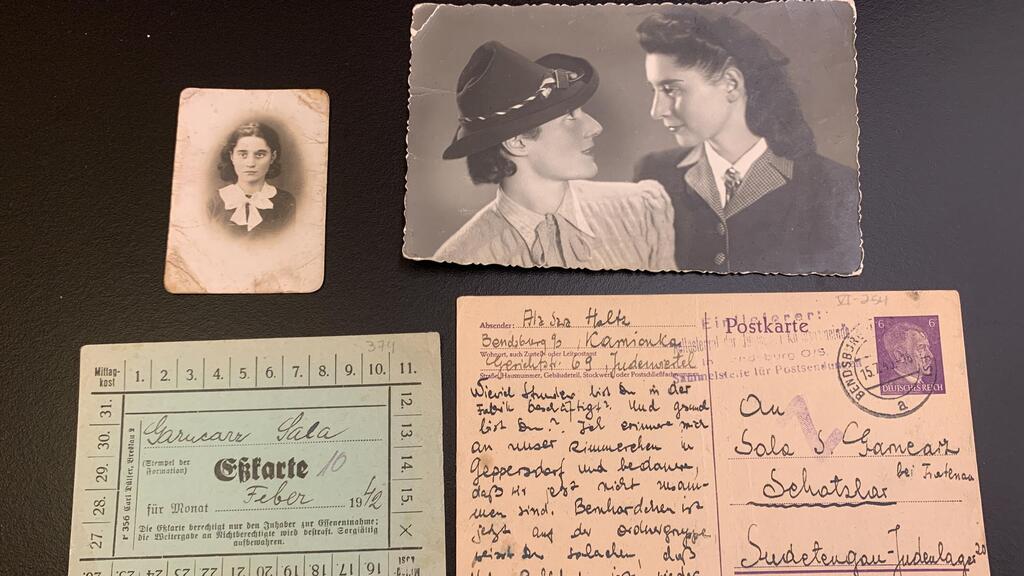

From the archive collection of Sala Garncarz Kirschner, a teenage girl who survived the Holocaust in labor camps and kept over 300 letters
4. Archive collection of Sala Garncarz Kirschner, a teenage girl who survived the Holocaust in labor camps and kept over 300 letters she received from relatives and friends. Kirchner, 16 years old at the time, could not answer them but kept the collection of letters with her and took it from one Nazi camp to another. The letters are all in German according to the Nazi's rules, and most of them were written by Kirchner's friends, who did not survive. To this day, groups of students from many schools around the country come to the library specifically to view the collection, which includes Kirchner's photo and the daily food stamps she was allotted.
5. A collection of signatures of all the signatories of Israel's Declaration of Independence. The signatures were all collected by the tenacious 16-year-old Michael Levin. It took him three years to finish the job, during which he pursued signatories from all over the world, including those who wanted to keep a low profile but finally fell under the boy's charm and gave him their signature. Among others, there are signatures here of David Ben-Gurion, Yitzhak Ben-Zvi, Golda Meir, David Ramez, David Pinkas, Moshe Sharett, Herzl Rosenblum, Rabbi Ze'ev Gold, Rabbi Yitzhak-Meir Levin, Rabbi Kalman Kahana, Rabbi Yehuda Leib HaCohen Fishman Maimon, Eliezer Kaplan, Avraham Katznelson and Pinchas Rosen, Behor Shalom Shitrit, Eliyahu Dobkin and others.
6. An illustration map from 1917 covering the number of Jews "in the world." Although it did not include Poland and Russia, that did not prevent the illustrators from presenting New York as the center of the Jewish world. Audacity has always been the most distinctive Jewish trait.
7. "The Jewish State: Various Essays About the East Africa Proposal" written by Eliezer Ben-Yehuda (Warsaw, 1905) in support of the “Uganda plan”, with a dedication to his friend Mordechai Ezrachi (Krishevsky), former head of the Teachers' Association.
15 View gallery
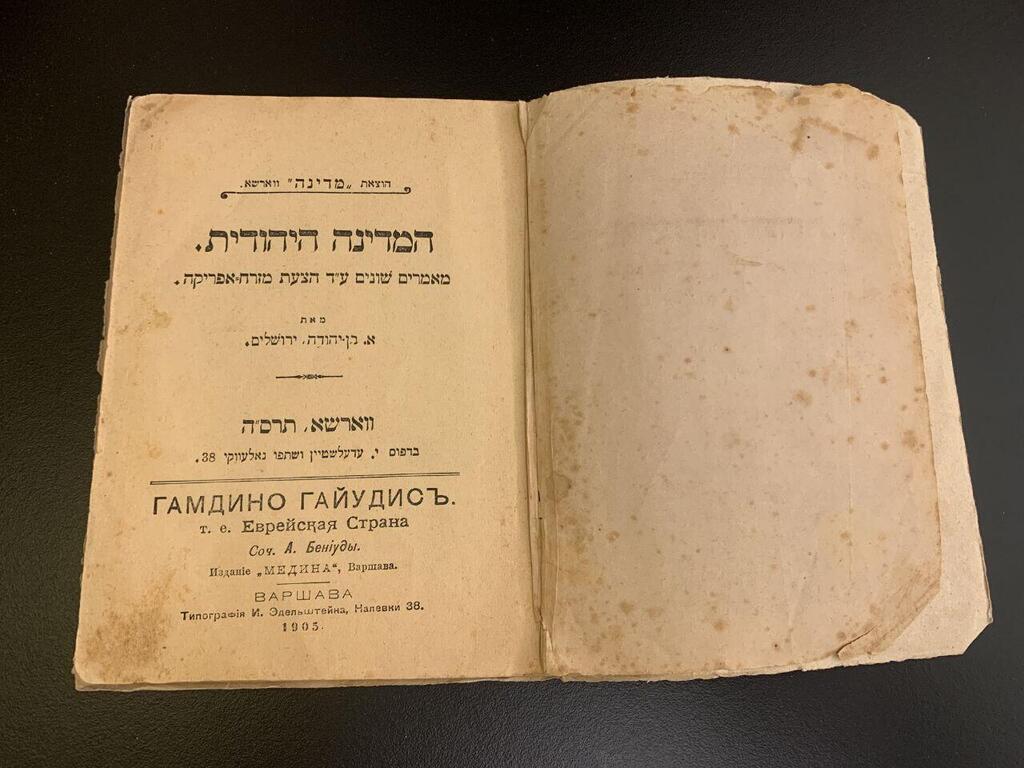

The Jewish State: Various Essays About the East Africa Proposal by Eliezer Ben-Yehuda
Ben-Yehuda was always a fervent Zionist but supported Herzl's proposal to establish the Jewish state in Uganda for a time. The criticism was not slow to come, and Ben-Yehuda quickly abandoned the idea.
8. An incunabulum (a document printed in the earliest stages of printing in Europe) of “Sefer Mitzvot Gadol" (Rome, 1469-1472) – the oldest Hebrew document bearing woodcut printing illustrations.
The images are very abstract due to the complex technique, but researchers agree that they are symbols of the festival of Sukkot: a palm branch and a willow that were meant to decorate one of the most sought-after books of the time.
9. Gershom Scholem at the Offenbach Archival Depot, 1946. Part of the photo albums found in the book collecting point in the American sector of Germany, 1945-1946.
The photos show German prisoners of war arranging and cataloging the books that were looted by the Nazis and recovered by American soldiers. The researcher and author Gershom Scholem was one of the experts called upon to restore order to the chaos.
10. "HaTzofeh BaAretz HaHadashah" (New York, 1872) - the first Hebrew weekly published in the United States. "It is very rare for such a delicate magazine paper to be preserved so perfectly," says Dr. Sholokhova as she handles it with special gloves just to present it.
11. A Hebrew translation of the opera "Betulia Liberata" by Pietro Metastasio (Amsterdam, 1792), set to music by Mozart. This rare translation is one of the first operas translated to Lashon Hakodesh, reflecting Mozart's immense popularity at that time.
15 View gallery
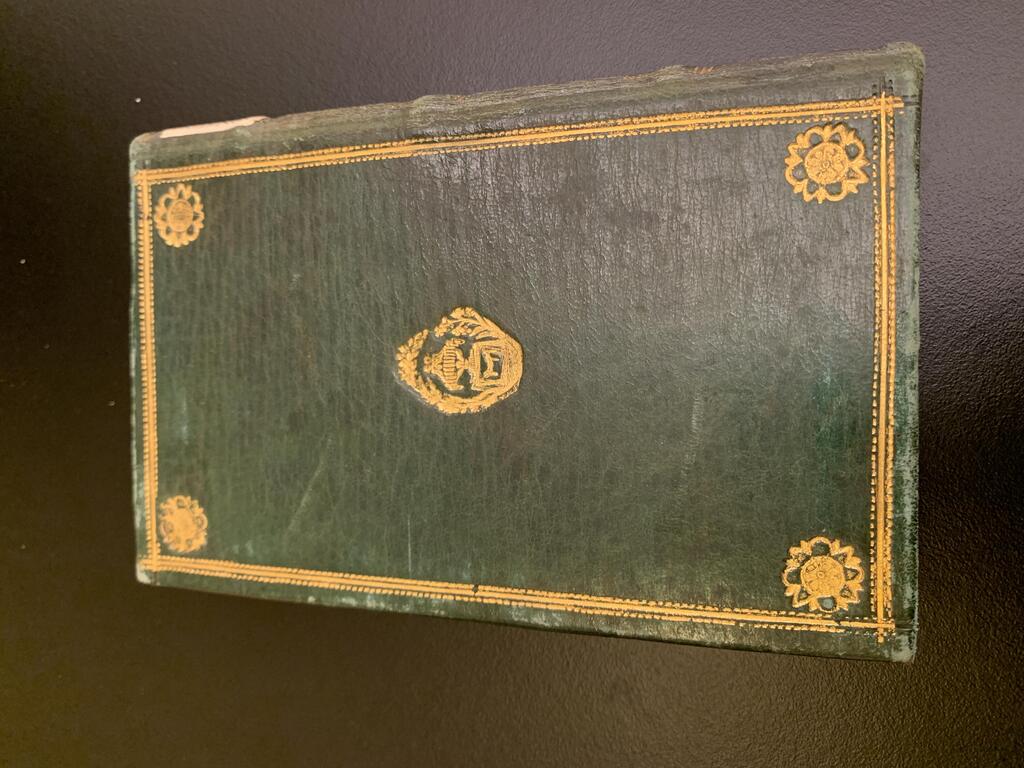

Hebrew translation of the opera "Betulia Liberata" by Pietro Metastasio (Amsterdam, 1792)
12. The massive visitors' book of the Jewish Palestine Pavilion at the 1939-1940 New York World's Fair - contains signatures of 7,400 visitors, including that of Ben-Gurion - a signature that was only discovered by Israeli visiting researcher Shani Avni a year ago. The book itself is a rare handwritten work designed by artist Itamar David, who also designed the ubiquitous “David” Hebrew font.
15 View gallery
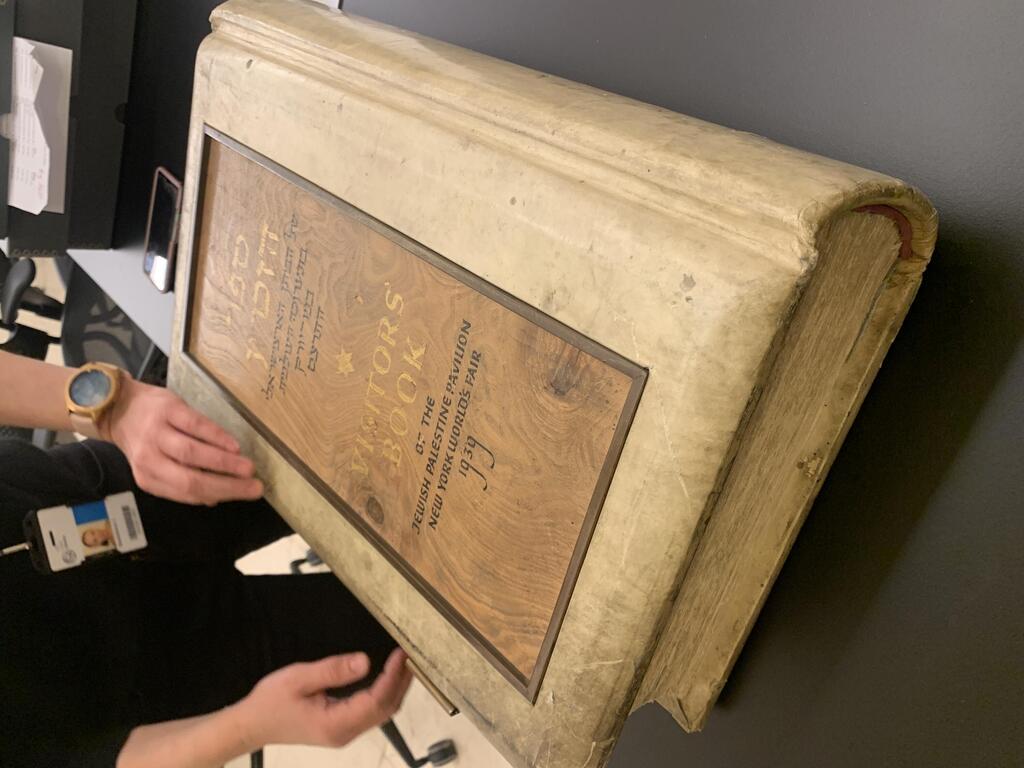

The visitors' book of the Jewish Palestine Pavilion at the 1939-1940 New York World's Fair


